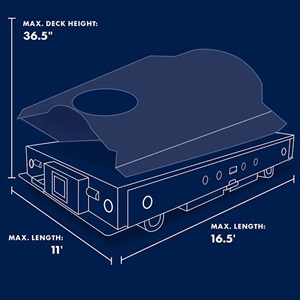How Northrop Grumman produces a fuselage every 30 hours
Using Automation and Robotics in Advanced Aircraft Production

By Brooks McKinney, APR
Seeking creative, innovative ways of maintaining demanding production rates while also maintaining high standards for precision, quality and affordability has been key to the growth of the F-35 program at Northrop Grumman. The company’s manufacturing experience is a critical part of its success in supporting the latest in fighter aircraft.
In late 2001, Northrop Grumman was named a principal member of a Lockheed Martin-led industry team to produce the stealthy, multi-role F-35 Lightning II’s center fuselage in significantly high volumes. This would require incorporating greater automation capabilities paired with cutting-edge robotics to ensure program success.
Northrop Grumman also produces multiple mission system capabilities including its integrated Communications, Navigation and Identification (iCNI) system, which acts as a central nervous system for the advanced fighter. Additionally, the team provides modification management, product support integration and component repair for the F-35.
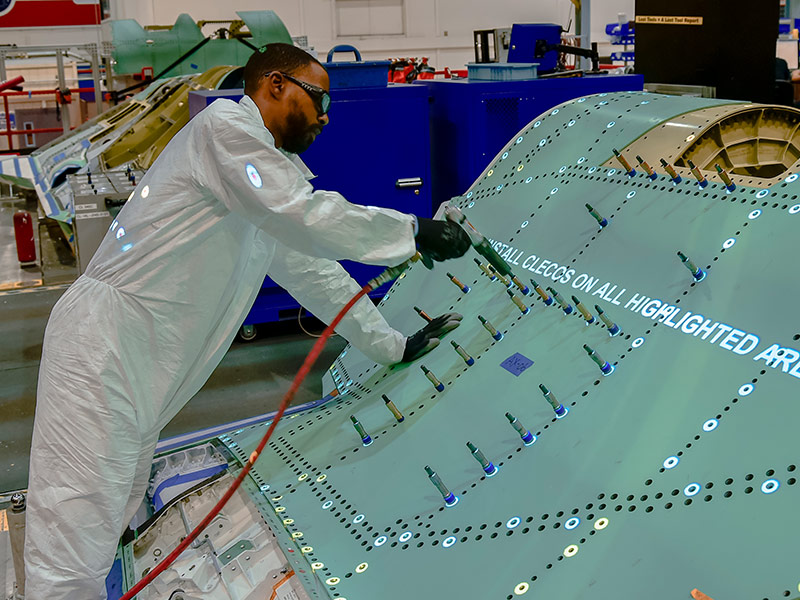
Counting on Automation to Improve the F-35 Production
"We knew that automation and robotics would be key to meeting the F-35 program's goal of continued high-volume production," says Glenn Masukawa, head of the F-35 at Northrop Grumman. "We also needed to be affordable, which implied a lot of cost reductions over time."
Northrop Grumman had previously pioneered automated manufacturing systems to produce key subassemblies for military aircraft. However, the new expectation set was for a production interval of one day -- a goal that would test even the most advanced aircraft assembly lines in the world.
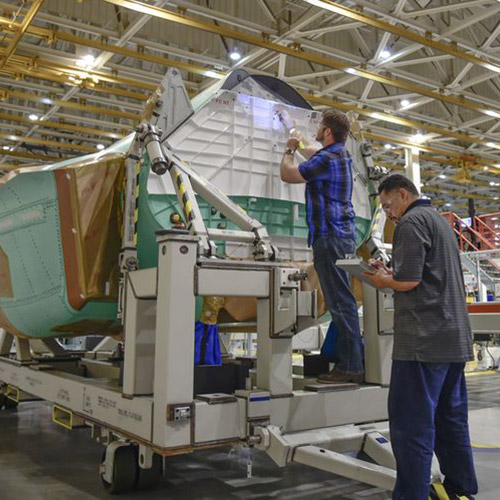
Learning from Automakers to Develop an Integrated Manufacturing System
To meet this challenge, the company turned to a comparable high-rate production industry in the country: the U.S. automotive industry.
"We teamed up with KUKA Systems North America, a Detroit-based automation technology company that specialized in integrating assembly lines for the automotive industry," explains Scott Johnson, F-35 center fuselage integrated product team lead. "We blended their understanding of automation and automotive production lines with our expertise in aerospace tooling. The resulting Integrated Assembly Line (IAL) represents the best production practices from both industries."
The IAL was also an opportunity to eliminate previous standalone islands in the company's F-35 manufacturing process and develop a truly integrated manufacturing system, he adds.
Meeting Production Goals
The U-shaped IAL is located at Northrop Grumman's Aircraft Integration Center of Excellence in Palmdale, California. It comprises more than 100 build stations and 22 automated systems designed to enhance quality, safety and affordability. Now operating at full production, the IAL currently completes an F-35 center fuselage every 30 hours, which corresponds to a production interval of 1.25 days.
To date, Northrop Grumman has delivered 850 F-35 center fuselages. In 2021 alone, the company plans to deliver 149 such units.
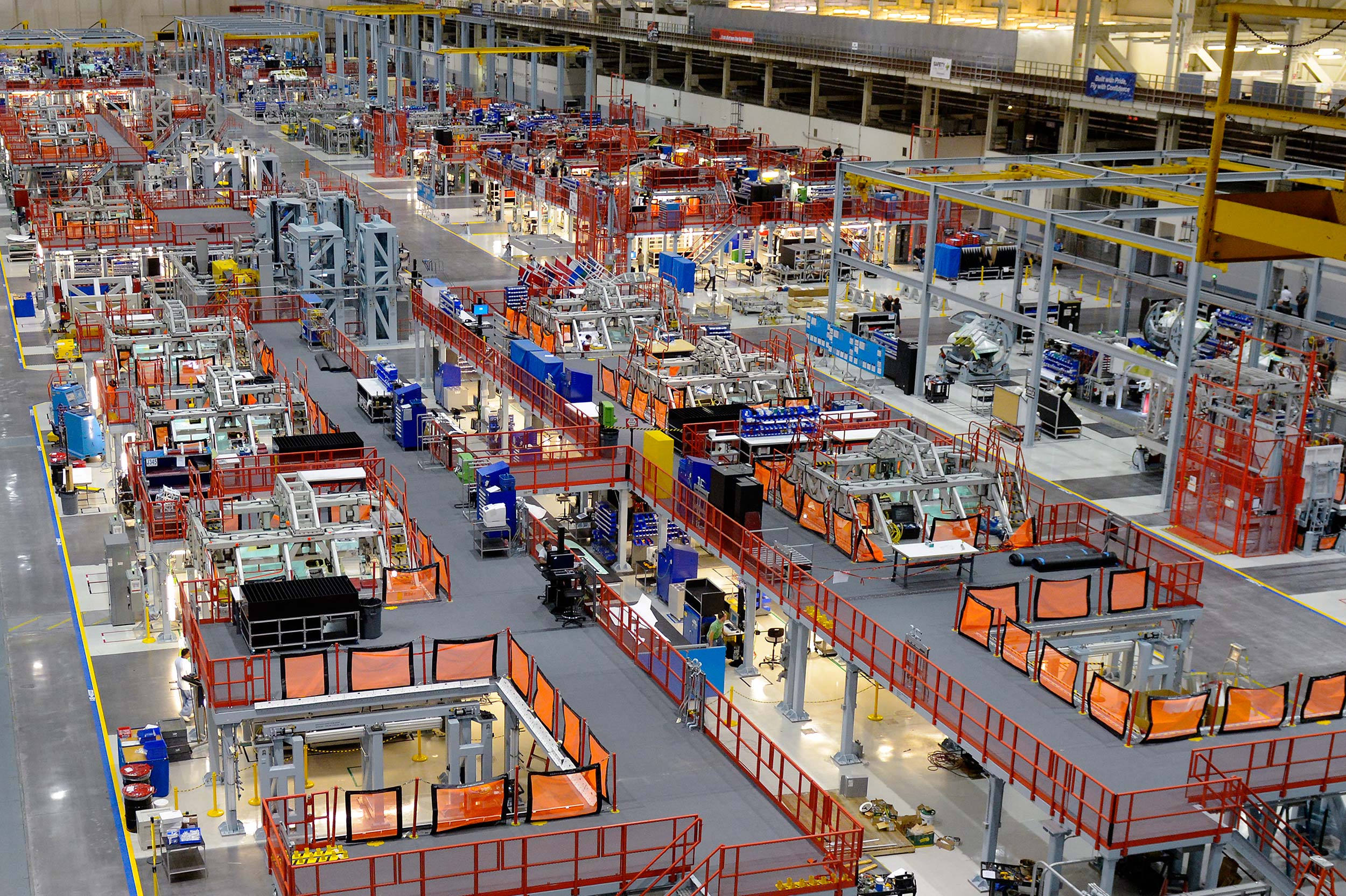
Going Three-on-One
According to Johnson, one of the most remarkable aspects of the IAL is that it produces all three F-35 variants — Conventional Takeoff and Landing (CTOL), Carrier Variant (CV), and the Short Takeoff Vertical Landing (STOVL) — at the same time.
"All three variants use the same base tooling," Johnson says. "Our secret sauce, however, is Northrop Grumman's very robust global supply chain."
He notes that the supply chain team helped to develop a very methodical process for delivering parts to the IAL using containers called "shadow boxes." Each box contains foam cutouts for the specific parts that mechanics need to install on each center fuselage. Once those parts have been installed, the team picks up the empty box and refills it for the next variant coming down the line. This makes multi-variant production a seamless endeavor, on a single production line.
"This simple but very effective process means that we have near-perfect accuracy in installing the right part on the right jet," says Masukawa.
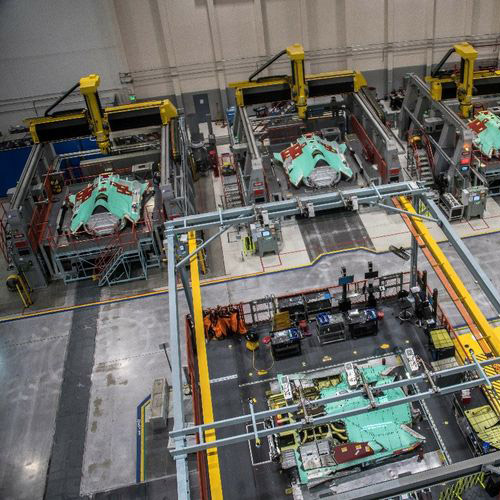
Affordability and Innovation with Next Gen Tech
Of course, no production equipment lasts forever, and technology never stands still.
"We're constantly looking for opportunities to apply new manufacturing technologies to make our F-35 build processes more efficient and more affordable," says Masukawa. "The goal is always to maximize our use of automation."
In the end, as Masukawa notes, building a successful advanced aircraft production environment requires talent and commitment from the entire, diverse team.
"We rely on the talents and dedication of many people, including mechanics, manufacturing engineering teams, line managers, quality inspectors, and a global supply chain that includes more than 250 domestic and international suppliers," he says. "It's not just about automation and robotics; it's really about the innovative people who guide us in applying technology in the smartest, most cost-effective ways to meet the expectations of our current and future customers."
More Innovation Stories
Read all stories about advanced technology and innovation >>
